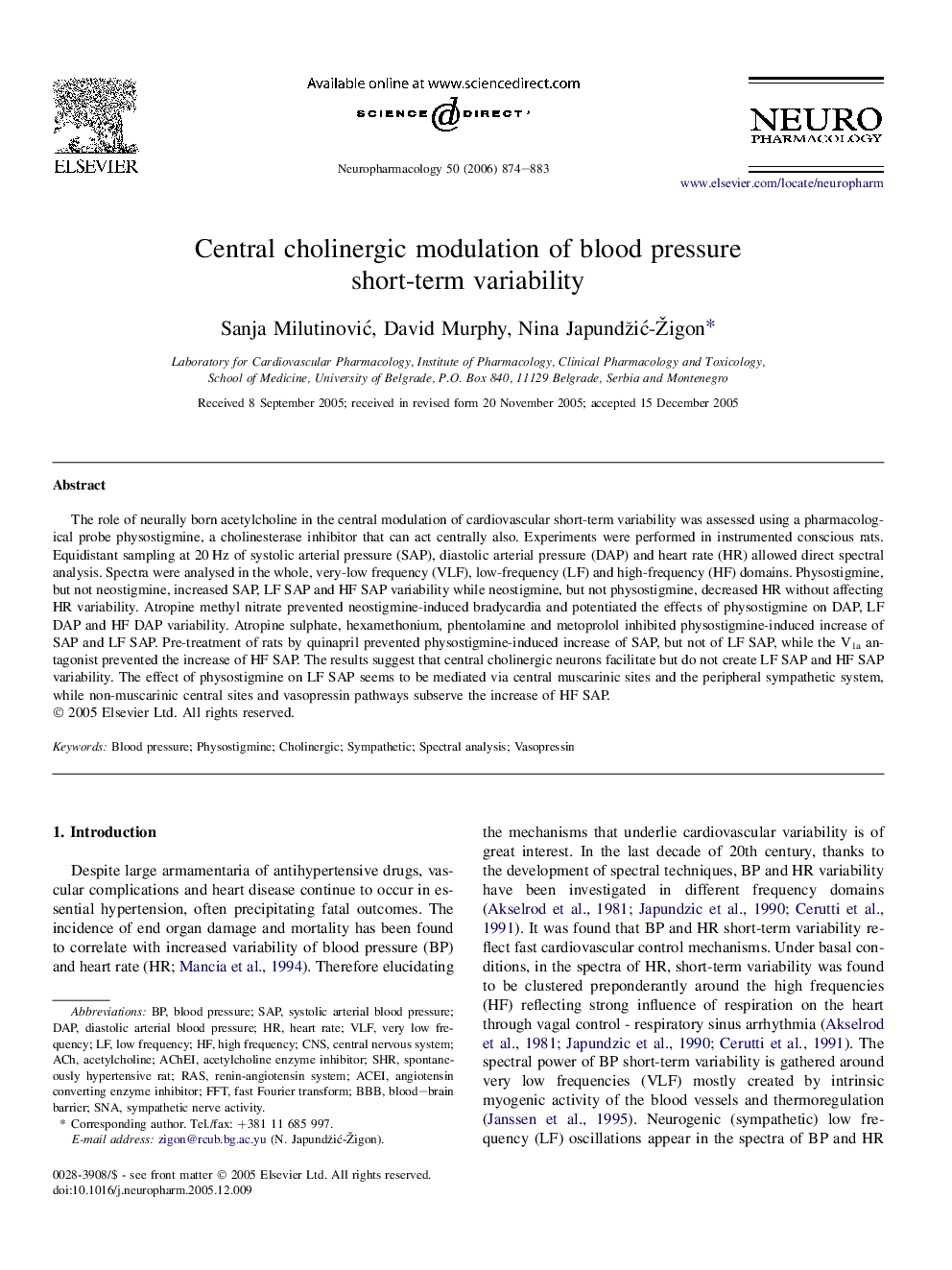| Article ID | Journal | Published Year | Pages | File Type |
|---|---|---|---|---|
| 2495409 | Neuropharmacology | 2006 | 10 Pages |
The role of neurally born acetylcholine in the central modulation of cardiovascular short-term variability was assessed using a pharmacological probe physostigmine, a cholinesterase inhibitor that can act centrally also. Experiments were performed in instrumented conscious rats. Equidistant sampling at 20 Hz of systolic arterial pressure (SAP), diastolic arterial pressure (DAP) and heart rate (HR) allowed direct spectral analysis. Spectra were analysed in the whole, very-low frequency (VLF), low-frequency (LF) and high-frequency (HF) domains. Physostigmine, but not neostigmine, increased SAP, LF SAP and HF SAP variability while neostigmine, but not physostigmine, decreased HR without affecting HR variability. Atropine methyl nitrate prevented neostigmine-induced bradycardia and potentiated the effects of physostigmine on DAP, LF DAP and HF DAP variability. Atropine sulphate, hexamethonium, phentolamine and metoprolol inhibited physostigmine-induced increase of SAP and LF SAP. Pre-treatment of rats by quinapril prevented physostigmine-induced increase of SAP, but not of LF SAP, while the V1a antagonist prevented the increase of HF SAP. The results suggest that central cholinergic neurons facilitate but do not create LF SAP and HF SAP variability. The effect of physostigmine on LF SAP seems to be mediated via central muscarinic sites and the peripheral sympathetic system, while non-muscarinic central sites and vasopressin pathways subserve the increase of HF SAP.
